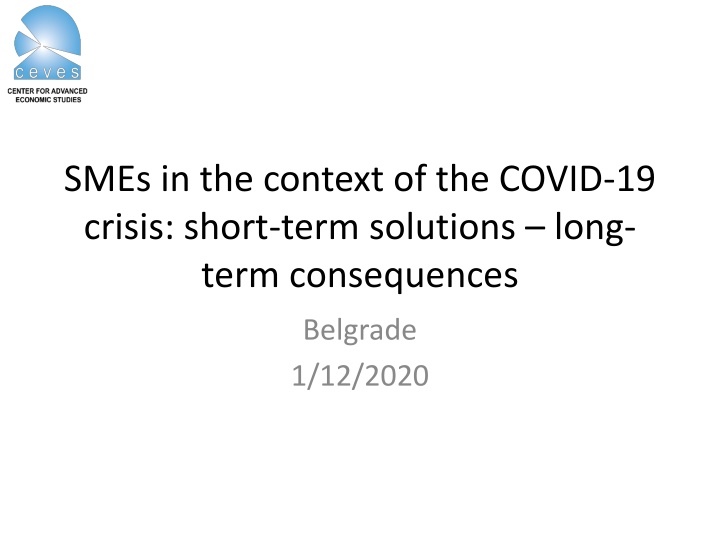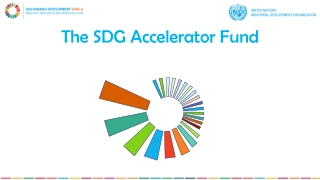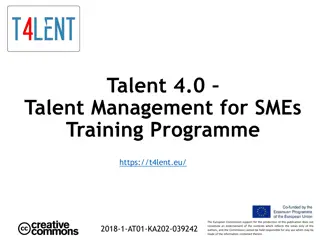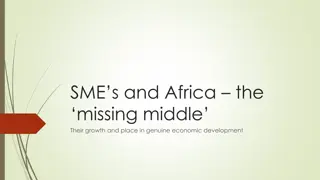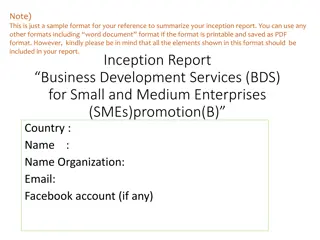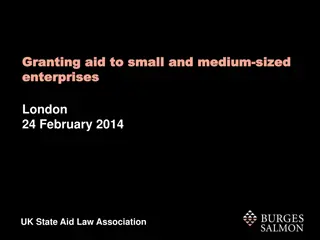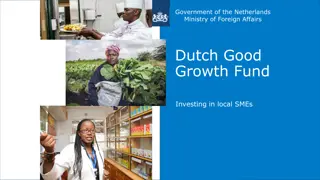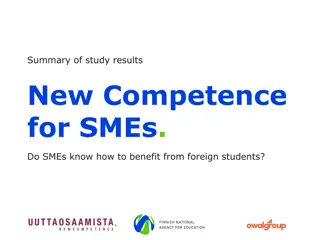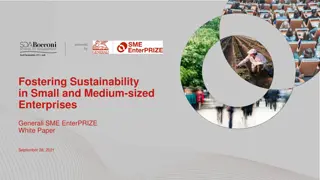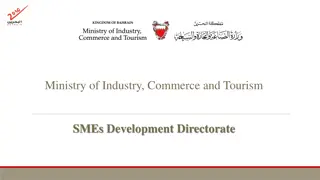Impact of COVID-19 on SMEs in Belgrade
In the context of the COVID-19 crisis in Belgrade, short-term solutions have led to long-term consequences for SMEs. Government assistance has been indiscriminate and unsustainable, with stark sectoral differences impacting various industries. The third wave in Serbia reflects lessons not learned, affecting the most vulnerable sectors and the overall economy.
Download Presentation

Please find below an Image/Link to download the presentation.
The content on the website is provided AS IS for your information and personal use only. It may not be sold, licensed, or shared on other websites without obtaining consent from the author.If you encounter any issues during the download, it is possible that the publisher has removed the file from their server.
You are allowed to download the files provided on this website for personal or commercial use, subject to the condition that they are used lawfully. All files are the property of their respective owners.
The content on the website is provided AS IS for your information and personal use only. It may not be sold, licensed, or shared on other websites without obtaining consent from the author.
E N D
Presentation Transcript
SMEs in the context of the COVID-19 crisis: short-term solutions long- term consequences Belgrade 1/12/2020
A mild average, but stark sectoral differences SORS: Q1-Q3 decrease GDP 0,9% yoy Growth rates in Q1-Q3 2020: Structural factors: - Less integrated in the GVC - Higher share: - Agriculture - State (increase in wages in 2019) - ICT - Smaller share of tourism * Estimate - CEVES
Government assistance indiscriminate and unsustainable Wage subsidies costs and potential savings Sector characteristics Total costs, EUR mln Number of employees in th. Targeted package Revenue shortfall* Actual Most affected1 Moderately affected2 Least affected3 Total * Between March and May in comparison with the companies' expectations prior to the crisis for this period 1: Passenger transport, HORECA, tourist agencies, education, health, personal services, gambling 2: Other manufacturing, specialized retail, wholesale, freight, professional services 3: Food and beverage, construction, food retail, ICT 110 590 217 917 <-70% -29% -10% -29% 120 640 235 995 130 324 18 472 Government support including both fiscal and monetary measures was relatively abundant (over 7% of GDP) ...but was provided to all SMEs equally implying relatively higher costs, of approx EUR 1 bn only in 1st and 2nd package ...which is some EUR 400-500 mln more than if it had at least been proportional to revenue shortfall >> 12 months of support only to the most affected would costEUR 340 mln <<
Third wave in Serbia a lesson not learned Effect of the measures on the most affected sectors and (indirectly) to the overall economy S1: A lesson learned Q4 2020 S2: A harsh winter Q4 2020 S3: A realistic scenario Q4 2020 2021 2021 2021 Revenue shortfall -30,0 -35,0 Pad prihoda Total HORECA & tourist agencies Personal services, entertainment, gambling -19,0 -24,0 -15,0 -19,0 -29,0 -33,0 ? -14,0 -10,0 -26,0 -24,0 Total effect on GDP -2,3 Total HORECA & tourist agencies Personal services, entertainment, gambling -2,1 -1,3 -2,6 -1,4 -0,9 -1,5 -1,7 -0,7 -0,4 -0,8 -0,9 Ongoing flareup is more intense than previously expected... ...and was partly caused by a belated usage of (inadequately) stringent measures in HORECA, personal services, etc. ...although these sectors have relatively small share in total GDP
Third wave for Serbia second for the EU Infection rate Covid-19 per 1,000,000 citizens surpassed those who have experienced a strong flareup in the second wave Currently among the most infected in Europe...
Thank you for your attention! For more details, see the Report: The COVID-crisis and Serbia s SMEs: Assessment of Impact and Outline of Future Scenarios This Report was prepared in cooperation with the World Bank.
